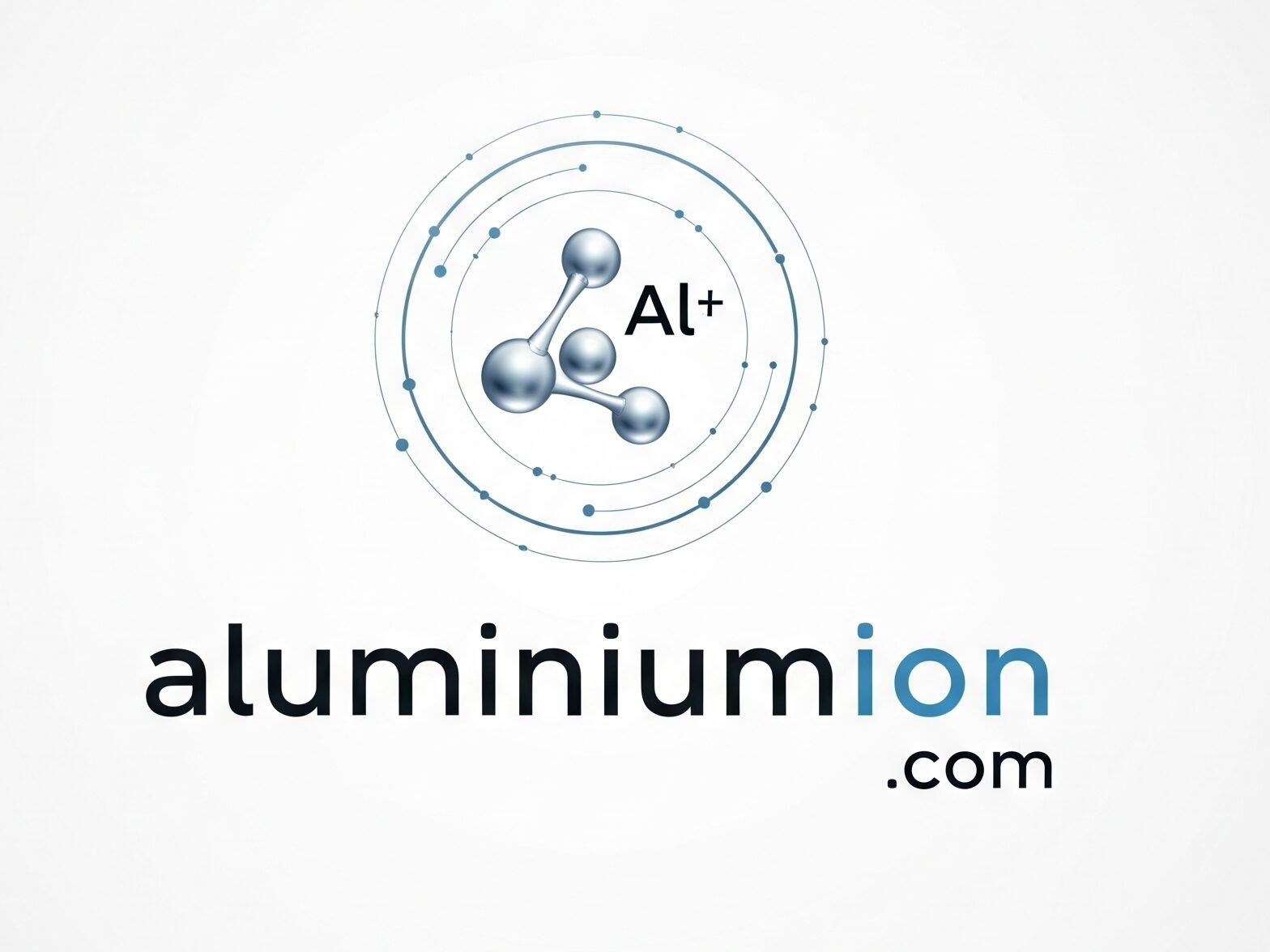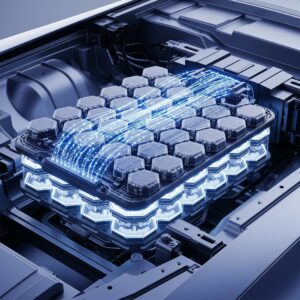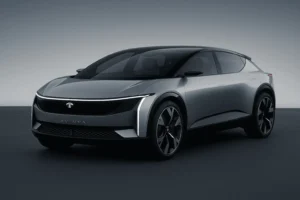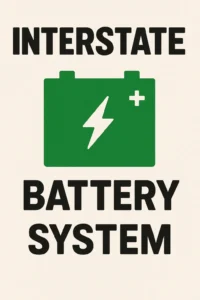The global landscape of energy storage is undergoing a profound transformation, driven by an urgent need for solutions that are not only powerful but also safer, more cost-effective, and inherently sustainable. For decades, lithium-ion (Li-ion) batteries have dominated this space, powering everything from our smartphones to electric vehicles. However, their widespread adoption has illuminated significant challenges, including the escalating cost of lithium, the inherent supply chain risks associated with its limited geographical availability, and notable safety concerns such as flammability. These fundamental limitations are not merely minor inconveniences; they represent critical hurdles that necessitate the exploration of next-generation battery technologies. This pressing demand for alternatives serves as a powerful catalyst, propelling rapid innovation in the field of energy storage.
In this dynamic environment, aluminum-ion batteries (AIBs) are emerging as a compelling and highly promising contender. This innovative class of rechargeable batteries leverages the unique properties of aluminum to directly address many of the limitations inherent in lithium-based systems. At their core, AIBs function by utilizing aluminum ions as the primary charge carriers, facilitating the electrochemical processes that store and release energy. The excitement surrounding AIBs stems from their inherent promise: a future characterized by significantly lower production costs, enhanced safety protocols, remarkably faster charging times, and a vastly improved environmental footprint. This combination of advantages positions AIBs as a critical area of focus in contemporary energy research, suggesting a potential paradigm shift in how energy is stored and utilized globally.
How Aluminum-Ion Batteries Work: Unpacking the Magic! 💡
At their most fundamental level, aluminum-ion batteries share a common architectural blueprint with other rechargeable battery chemistries, comprising three essential components: an anode, a cathode, and an electrolyte. The anode, serving as the negative electrode, is typically constructed from aluminum metal, acting as the reservoir and source of aluminum ions. Conversely, the cathode, the positive electrode, is engineered to reversibly store and release these aluminum ions during the charging and discharging cycles, often utilizing materials such as graphite or other conductive compounds. Bridging these two electrodes is the electrolyte, which functions as a conductive medium, enabling the smooth and efficient transit of aluminum ions between the anode and cathode.
A pivotal characteristic distinguishing aluminum-ion batteries lies in the unique charge-carrying capacity of the aluminum ion itself. Each aluminum ion (Al³⁺) possesses a trivalent charge of +3, a stark contrast to the monovalent +1 charge carried by lithium ions (Li⁺). This fundamental difference confers a substantial advantage: for every single aluminum ion that traverses the electrolyte, three electrons are transferred, thereby dramatically amplifying the battery’s energy storage capability. Theoretically, this inherent property allows AIBs to achieve exceptionally high energy densities, potentially up to 50 times the volumetric energy density of conventional lithium-ion batteries. However, the actual redox reactions within AIBs are more intricate than a simple Al³⁺ transfer, often involving complex chloroaluminate ions like AlCl₄⁻ or Al₂Cl₇⁻ as the mobile charge carriers within the electrolyte. This complex chemistry is indispensable, as it plays a crucial role in preventing the passivation of the aluminum anode, a phenomenon that historically hindered the development of rechargeable aluminum batteries. This disparity between the immense theoretical potential and the current practical achievements underscores a significant area of ongoing research, focusing on bridging this gap to unlock the full capabilities of AIB technology.
The operational cycle of an AIB can be conceptualized as a two-way journey for these ions. During the charging process, an external electrical voltage is applied, compelling aluminum ions to detach from the aluminum anode. These ions then embark on their journey through the electrolyte, ultimately embedding themselves within the cathode material, effectively storing electrical energy in chemical form. Conversely, when the battery is in use (discharging), the stored aluminum ions reverse their path, migrating back from the cathode to the anode. This directed movement facilitates the release of the stored energy, which is then harnessed to power various devices. The electrolyte, while serving as the vital conduit, has historically presented a dual challenge: its complex chemistry, while enabling rechargeability, has also introduced issues such as moisture sensitivity and corrosion. Consequently, advancements in electrolyte design are not merely incremental improvements but represent fundamental solutions to long-standing chemical hurdles, directly influencing the battery’s safety, longevity, and overall cost-effectiveness.
AIB Superpowers: What Makes Them Shine So Bright? ⭐
Abundance & Affordability: Aluminum: Earth’s plentiful, cost-effective power source. 🌍💰
One of the most compelling advantages of aluminum-ion batteries is their reliance on aluminum, the most abundant metal in Earth’s crust. This ubiquitous availability makes aluminum significantly easier and far cheaper to procure compared to lithium, which is concentrated in a limited number of geographical locations worldwide. The direct consequence of this abundance is a substantial reduction in raw material costs, positioning AIBs as a more economically viable option, particularly for large-scale energy storage systems and a myriad of other applications. Furthermore, this plentiful supply mitigates the supply chain risks and geopolitical concerns often associated with the extraction and distribution of rarer elements like lithium. The cost-effectiveness derived from aluminum’s natural prevalence is a powerful driver for its adoption, making AIBs an attractive solution to the global demand for affordable energy storage.
Safety First! 🔥🚫 Non-flammable electrolytes and enhanced stability.
Safety is paramount in battery technology, and AIBs present a significant leap forward in this regard. A key advantage is their inherent safety profile, largely attributable to the use of non-flammable ionic liquid electrolytes, which stand in contrast to some lithium-ion batteries that carry risks of overheating, fire, or even explosion. Recent advancements, particularly in solid-state electrolyte designs, have further bolstered this safety advantage. These new designs demonstrate remarkable resistance to mechanical damage, such as repeated sharp jabs, and can withstand extreme temperatures—up to 392°F (200°C) and even exposure to a 1000°C flame without igniting or leaking. The utilization of an aluminum metal anode also contributes to improved air stability when compared to a lithium metal anode, adding another layer of safety. These safety features are not merely isolated benefits; they are interconnected with the potential for large-scale deployment, where safety is a non-negotiable requirement.
Lightning-Fast Charging: Power up in minutes, not hours! ⚡
The potential for rapid charging is another hallmark of aluminum-ion batteries. Research prototypes have showcased impressive capabilities, demonstrating the potential to achieve a full charge in mere minutes, with some reports even claiming charging times as low as 1.1 seconds. This represents a substantial improvement over the hours often required for conventional lithium-ion batteries. This exceptional charging speed is primarily attributed to the more efficient movement of aluminum ions through the electrolyte and the transfer of three electrons per ion, which significantly accelerates the electrochemical process. Such rapid charging capabilities could fundamentally transform user experiences, particularly in electric vehicles, by alleviating concerns about long charging durations.
Long-Lasting & Resilient: Built to endure thousands of cycles. 💪
Durability and longevity are critical performance metrics for any battery technology, and AIBs excel in this area. Recent breakthroughs have demonstrated that solid-state AIBs can achieve an “exceptionally long life,” enduring an impressive 10,000 charge-discharge cycles while experiencing less than a 1% loss of their original capacity. Other prototypes have exhibited remarkable resilience, completing 7,500 cycles with no discernible capacity loss, and one even retaining over 91% capacity after an astounding 250,000 cycles. This extended operational lifespan translates directly into fewer battery replacements, reduced maintenance, and a lower overall cost of ownership for devices and systems utilizing AIBs. This longevity, coupled with the abundance of aluminum, creates a powerful synergy that enhances both sustainability and economic viability.
Eco-Friendly & Recyclable: A greener battery for a cleaner planet. ♻️
The environmental footprint of battery production and disposal is a growing global concern. Aluminum-ion batteries offer a more environmentally conscious alternative. The mining of aluminum is generally less damaging to the environment compared to lithium extraction, and aluminum itself is one of the most recyclable materials on Earth. A particularly significant advancement in this regard is the high recyclability of key components within new AIB designs. For instance, the aluminum fluoride salt (AlF₃) used in solid-state electrolytes can be recovered and reused at rates of up to 80% through a simple washing process, even if with slightly diminished performance in subsequent uses. This capability not only significantly reduces the environmental impact of AIB production but also contributes to lowering overall manufacturing costs, aligning AIB technology with global sustainability goals. The combination of these advantages—abundance, safety, fast charging, longevity, and eco-friendliness—positions AIBs as a holistic solution, directly addressing the critical weaknesses of existing battery technologies.
Latest Breakthroughs: The Science That’s Changing the Game! 🔬
The field of aluminum-ion battery research is experiencing a period of rapid and transformative innovation, driven by a focused effort to overcome historical limitations and unlock the full potential of this chemistry. This progress is not simply incremental; it represents a series of targeted solutions to specific, long-standing challenges, creating a compelling narrative of scientific advancement.
Solid-State Electrolytes: The secret to unprecedented longevity (10,000+ cycles!).
A monumental breakthrough reported in early 2025 by a collaborative team of researchers, including Wei Wang and Shuqiang Jiao from institutions such as the Beijing Institute of Technology, the University of Science and Technology Beijing, and Lanzhou University of Technology, involves the development of a novel recyclable solid-state electrolyte (F-SSAF). This innovation directly addresses critical historical limitations of traditional liquid aluminum chloride electrolytes, which were prone to corroding the aluminum anode and were highly sensitive to moisture. These issues previously led to poor stability and a decline in electrical performance over time. The development of this solid-state solution marks a pivotal moment, as it tackles these fundamental problems head-on, paving the way for more robust and reliable AIBs.
The F-SSAF electrolyte incorporates an inert aluminum fluoride (AlF₃) salt, ingeniously designed with a 3D porous structure. This unique architecture facilitates the effortless hopping of aluminum ions across the electrolyte, significantly enhancing its conductivity and ensuring smooth ion movement. Another crucial component of this advanced design is fluoroethylene carbonate (FEC), employed as an interface additive. FEC plays a vital role by creating a thin, solid coating on the electrodes. This coating is essential for preventing the formation of aluminum crystals, commonly known as dendrites, which typically degrade battery health and can lead to dangerous short circuits. The meticulous engineering of this electrolyte system directly translates into remarkable performance improvements. This solid-state design has enabled AIBs to achieve an “exceptionally long life,” demonstrating the ability to withstand 10,000 charge-discharge cycles while losing less than 1% of their original capacity and maintaining over 99% Coulombic efficiency. Furthermore, it has vastly improved moisture resistance and enhanced both physical and thermal stability, allowing the battery to endure extreme conditions without compromise.
Recyclable Components: Boosting sustainability and cutting costs.
A significant stride towards sustainability is the high recyclability of the aluminum fluoride (AlF₃) framework within this new solid-state design. Up to 80% of the AlF₃ can be recovered through a simple washing process and subsequently reused in another battery, albeit with a slight diminution in performance. This capability not only drastically reduces the environmental impact associated with battery production but also significantly contributes to lowering overall manufacturing costs, making AIBs a more economically attractive and environmentally responsible solution.
Other exciting research frontiers and material innovations.
Beyond the groundbreaking solid-state electrolytes, the scientific community is actively pursuing various other avenues to enhance AIB performance, demonstrating a robust and interdisciplinary approach to battery development. Researchers are diligently exploring:
- Novel Cathode Materials: Numerous groups are investigating new materials to improve aluminum ion storage, energy density, and cycle stability. This includes the exploration of polyaniline, SnSe nanoparticles, V₂C@Se (MXene) composites, WS₂ layered cathodes, CoSe₂/MXene, V₂O₅ nanosheets, and organic materials, among others. These diverse efforts aim to find the optimal material combinations that can efficiently host and release the trivalent aluminum ions.
- Electrolyte Optimization (beyond solid-state): While solid-state electrolytes represent a major leap, research continues on other electrolyte types. This includes efforts on high-energy-density aluminum–sulfur batteries utilizing inorganic chloride molten electrolytes. Other groups are focusing on aqueous aluminum batteries, refining ionic liquid electrolytes for high performance, and developing bimetallic rechargeable Al/Zn hybrid aqueous batteries. This multi-pronged approach ensures that various chemical pathways are explored to find the most effective and scalable solutions.
- Interface Engineering: Beyond the use of FEC, significant research is dedicated to understanding and precisely controlling the formation of the solid-electrolyte interphase (SEI) layer. This interface is crucial for long-term stability and for preventing dendrite growth, which can lead to battery failure. Furthermore, “pre-cycling” protocols are being developed, which involve controlled charging and discharging processes to condition the battery for better long-term performance, similar to practices in lithium-ion batteries. These efforts highlight that battery development is not just about discovering new materials but also about optimizing their interactions and operational protocols.
The sheer variety of approaches, from fundamental material science to electrochemical engineering, underscores the dynamic nature of AIB research. This broad scientific assault on the problem increases the probability of discovering diverse solutions and expanding the range of potential applications.
Table: Key Advancements in AIB Technology (2023-2025)
| Advancement | Key Features | Impact | Researchers/Institutions | Source/Year |
| Solid-State Electrolyte (F-SSAF) | Inert AlF₃ framework, FEC interface additive, reduced EMIC-AlCl₃ dependency. | 10,000+ cycles, >99% Coulombic efficiency, enhanced moisture/thermal stability, 80% AlF₃ recyclability, mitigates corrosion/dendrites. | Wei Wang, Shuqiang Jiao & colleagues (Beijing Institute of Technology, University of Science and Technology Beijing, Lanzhou University of Technology) | ACS Central Science (Jan/Feb 2025) |
| High-energy-density Aluminum-Sulfur Batteries | Inorganic chloride molten electrolytes. | High safety, cost-effectiveness, fast-charging. | Various research efforts | ACS Central Science (ongoing) |
| Advanced Cathode Material Research | Exploring polyaniline, SnSe, MXene, WS₂, CoSe₂/MXene, V₂O₅ nanosheets, defect modulation, organic materials. | Improving Al³⁺ storage, energy density, and cycle stability. | Zhiqiang Niu, Jianling Li, Hongsen Li, Guihua Yu, Lili Wang, Amreesh Chandra, Fengxia Geng, Lilong Xiong, etc. | Various journals (e.g., Angewandte Chemie, Chemical Engineering Journal, Energy Storage Materials, Advanced Functional Materials, Advanced Materials, ACS Applied Energy Materials, ChemSusChem) (2020-2024) |
Challenges on the Road Ahead: Hurdles to Overcome 🚧
Despite the impressive strides made in aluminum-ion battery technology, several significant challenges remain that researchers are actively working to address before widespread commercialization can be realized. The development of new battery chemistries often follows a “whack-a-mole” pattern, where solving one major problem frequently reveals new, more nuanced ones, underscoring the iterative and complex nature of bringing a novel technology to market.
Optimizing cathode materials for peak performance.
A persistent challenge lies in identifying and optimizing the ideal cathode materials that can efficiently and reversibly store and release aluminum ions without experiencing significant degradation. While graphite is a commonly employed cathode material, its performance is not always optimal for aluminum ions. This is partly due to the larger size and higher charge of aluminum ions compared to lithium ions, which can lead to issues like the fracture of the graphite anode. Researchers are continuously exploring and synthesizing novel compounds to improve the capacity, stability, and overall performance of the cathode, which is critical for enhancing the battery’s energy density and longevity.
Ensuring electrolyte stability and preventing corrosion.
Even with the groundbreaking development of solid-state electrolytes, ongoing efforts are crucial to perfect their long-term stability and completely mitigate corrosion. Historically, traditional ionic liquid electrolytes were highly susceptible to moisture absorption and caused severe corrosion of the aluminum anode, leading to poor stability and a decline in electrical performance over time. While the new solid-state designs have significantly reduced these issues, continuous research is essential to ensure consistent long-term reliability across a broad spectrum of operating conditions, including varying temperatures and humidity levels. Furthermore, efforts continue to reduce the dependency on expensive components within the electrolyte system, which is vital for cost-effective mass production.
Boosting energy density to compete with established technologies.
While AIBs possess an impressive theoretical energy density, primarily due to the trivalent nature of aluminum ions, their current practical energy densities generally remain lower than those of established lithium-ion batteries. Bridging this gap between the immense theoretical potential and real-world performance is a critical objective for AIBs to become truly competitive, particularly for applications where compact size and lightweight energy storage are paramount. Continued advancements in both cathode and electrolyte materials are necessary to unlock higher practical energy densities.
The path to large-scale commercialization.
Aluminum-ion batteries are still in the early stages of development, with many studies conducted under controlled laboratory conditions that may not fully replicate the complexities of real-world applications. The transition from laboratory success to mass market readiness involves significant hurdles in engineering and manufacturing. Scaling up production, ensuring consistent performance across diverse applications, and further improving cost-effectiveness at volume are critical steps before widespread commercialization can occur. This includes addressing specific manufacturing limitations that may arise with solid-state battery designs. Additionally, understanding and optimizing “pre-cycling” protocols—a controlled charging and discharging process to condition the battery for better long-term performance, similar to lithium-ion batteries—is vital for practical implementation. The journey from scientific proof-of-concept to a commercially viable product requires substantial investment in engineering, manufacturing innovation, and rigorous testing under varied conditions.
AIBs vs. The Competition: Lithium & Sodium – Who Leads the Race? 🥊
The landscape of next-generation battery technology is a dynamic arena, with lithium-ion (Li-ion) batteries as the established leader and sodium-ion (Na-ion) batteries emerging as a strong contender alongside aluminum-ion batteries (AIBs). Each chemistry presents a unique set of advantages and challenges, and understanding their comparative strengths helps to define the strategic positioning of AIBs in the broader energy storage market. The rapid growth of the “next-generation advanced batteries” market indicates that there is ample room for multiple solutions, each finding its optimal niche.
A head-to-head comparison of performance, cost, safety, and environmental footprint.
| Metric | Lithium-ion (Li-ion) | Sodium-ion (Na-ion) | Aluminum-ion (AIB) |
| Energy Density (Wh/kg) | 120-270 (NMC: 160-270) | 100-160 (projected >200) | Theoretical 1060 (practical currently lower than Li-ion) |
| Raw Material Cost | High | Low | Very Low |
| Abundance | Limited | Very High | Very High (Most abundant metal) |
| Safety (Thermal Runaway/Flammability) | Higher Risk | Superior/Minimal Risk | High Safety/Non-flammable |
| Charging Speed | Slower (Hours) | Faster | Lightning Fast (Minutes/Seconds) |
| Cycle Life | Good (thousands) | Limited | Exceptional (10,000+ cycles demonstrated) |
| Environmental Impact (Mining/Recycling) | Higher (Damaging mining, difficult recycling) | Lower (Less invasive mining) | Lower (Less damaging mining, highly recyclable components) |
Identifying AIBs’ unique competitive edge and areas for growth.
When evaluating the competitive landscape, AIBs present a compelling blend of attributes that position them uniquely. While Li-ion batteries currently maintain a lead in practical energy density, making them indispensable for compact mobile applications, and Na-ion batteries are gaining traction for stationary grid storage due to their cost-effectiveness and abundance, AIBs offer a distinct combination of advantages. Their potential for ultra-fast charging, inherent safety, and exceptional longevity, coupled with the unparalleled abundance and low cost of aluminum, create a powerful competitive edge.
Many of AIB’s strengths directly address the known weaknesses of lithium-ion batteries. For instance, lithium’s scarcity and high cost are directly countered by aluminum’s abundance and affordability. Similarly, the flammability concerns associated with some Li-ion chemistries are mitigated by AIBs’ non-flammable electrolytes. This direct problem-solution relationship makes AIBs particularly attractive to industries and consumers seeking alternatives to current battery limitations.
The recent breakthroughs in solid-state electrolytes significantly strengthen AIBs’ position by overcoming key historical weaknesses such as electrolyte instability and corrosion. This progress suggests that AIBs are not merely an incremental improvement but a holistic solution with the potential to disrupt existing markets. This strategic positioning indicates that AIBs could be ideally suited for applications demanding both high power (due to fast charging) and large capacity (leveraging their theoretical energy density), especially where critical safety and cost considerations are paramount. This includes large-scale energy storage for grids and electric vehicles requiring rapid charging infrastructure. The “battery wars” are indeed shifting, with different chemistries finding their optimal niches, and AIBs are poised to capture a significant segment of this evolving market.
Real-World Impact: Where Will AIBs Power Our Future? 🏙️🚗
The transformative potential of aluminum-ion batteries extends across a wide array of sectors, promising to reshape how energy is stored and delivered in the coming decades. The repeated emphasis on “large-scale energy storage” within the research suggests that AIBs are uniquely positioned to fill a critical void in the global energy transition, where scale, cost, and safety are paramount. This is not merely about replacing existing batteries but enabling entirely new energy infrastructure.
Revolutionizing large-scale energy storage for grids.
Aluminum-ion batteries are a prime candidate for revolutionizing utility-scale energy storage systems (ESSs). These systems are indispensable for effectively integrating intermittent renewable energy sources, such as solar and wind power, into national grids. Their combination of low cost, enhanced safety, and exceptional longevity makes them highly suitable for providing reliable backup power, stabilizing grid fluctuations, and balancing energy supply and demand. The demonstrated ability of AIBs to withstand high temperatures and physical damage further enhances their viability for demanding grid applications, where robustness and resilience are crucial.
Driving the next generation of Electric Vehicles (EVs).
The electric vehicle (EV) sector is another area where AIBs are emerging as a compelling alternative to current lithium-ion solutions. The potential for lightning-fast charging, measured in minutes rather than hours, could dramatically enhance the EV user experience, directly addressing one of the most significant pain points for consumers: charging time. When combined with their enhanced safety profile, lower material costs, and longer operational lifespan, AIBs could offer electric vehicles greater range and significantly faster charging capabilities, positioning them as a highly competitive option in the rapidly expanding EV market. This could fundamentally change consumer adoption by making range anxiety a thing of the past.
Potential in portable devices, aerospace, and beyond!
Beyond these large-scale applications, AIBs show promise for a diverse range of other uses, demonstrating their versatility and broad applicability:
- Portable Devices: While current energy density still requires further improvement to fully compete with Li-ion in all portable electronics, the fast-charging capabilities and inherent safety of AIBs make them an attractive option for consumer electronics like smartphones and laptops.
- Medical Equipment: The enhanced safety features and reliability offered by AIBs are critical for sensitive medical devices, where uninterrupted and secure power is paramount.
- Aerospace & Defense: These sectors demand lightweight, durable batteries capable of performing reliably under extreme conditions. AIBs’ properties align well with these stringent requirements, presenting significant growth opportunities as these industries seek advanced battery technologies.
- Industrial Power Systems: AIBs could provide robust, long-lasting, and safe power solutions for various industrial applications, contributing to increased efficiency and reliability in manufacturing and operational processes.
The overall market for next-generation advanced batteries, encompassing AIBs, is projected to experience substantial growth, driven by the escalating demand for reliable and efficient energy storage solutions across virtually all industries. This indicates that AIBs are not just a direct replacement for existing batteries, but a foundational technology capable of enabling new product categories and accelerating the adoption of existing ones, thereby shaping the future of electrified systems.
Who’s Leading the Charge? Key Players & Innovators 🌐
The rapid advancement of aluminum-ion battery technology is a testament to a concerted global effort, involving both pioneering academic institutions and innovative commercial enterprises. This collaborative yet competitive environment is accelerating the pace of discovery and development, indicating a serious intent to move AIBs from the laboratory to large-scale production.
Spotlight on leading companies and research institutions.
The scientific breakthroughs in AIBs are often rooted in the rigorous research conducted at leading academic centers:
- Beijing Institute of Technology, University of Science and Technology Beijing, and Lanzhou University of Technology (China): These institutions are at the forefront of AIB innovation, notably responsible for the groundbreaking development of the recyclable solid-state electrolyte. Lead researchers like Wei Wang and Shuqiang Jiao have published their significant findings in prestigious journals such as ACS Central Science, marking a pivotal leap forward in battery longevity and stability.
- Stanford University: This renowned institution has contributed early prototypes that demonstrated impressive cycle life, achieving over 7,500 charge-discharge cycles with no loss of capacity, and showcasing ultra-fast charging capabilities, with claims of a full charge in as little as one minute.
- Zhejiang University: Researchers here developed an AIB prototype that exhibited exceptional durability, retaining 91.7% of its original capacity after an astonishing 250,000 cycles.
- Various University Research Groups: Beyond these highlighted institutions, numerous other academic groups globally are actively engaged in diverse aspects of AIB research. Their work spans the investigation of novel cathode materials and the optimization of electrolyte systems, contributing to a broad scientific understanding and continuous improvement of the technology. This includes groups led by Zhiqiang Niu, Jianling Li, Chunshuang Yan, and many others, publishing in various high-impact scientific journals. The prominence of Chinese institutions alongside Western universities and companies points to a global race in AIB development, where different regions may specialize in distinct aspects, from fundamental material science to commercialization strategies.
Exciting startups making waves in the AIB space.
The commercial landscape for AIBs, while still in its nascent stages, is rapidly expanding with several companies and startups making significant strides towards bringing this technology to market:
- Graphene Manufacturing Group Ltd. (GMG): A prominent player, GMG is actively developing graphene aluminum-ion batteries (“G+AI Battery”). The company has distributed prototypes of its coin cells to prospective customers globally and is focused on increasing both voltage and capacity to make them suitable for everyday personal devices. Notably, GMG has entered a collaboration agreement with BOSCH to establish a graphene aluminum-ion battery manufacturing plant, planned for Australia. This partnership between a nimble startup and an established industrial giant exemplifies a crucial synergy for accelerating commercialization.
- Saturnose: This battery manufacturer has developed its own aluminum-ion model, claiming an impressive energy density of 550Wh/L. This figure is reported to be 20% higher than some of the best lithium-ion batteries available, indicating a significant performance leap.
- Phinergy Ltd.: An Israel-based company, Phinergy is focusing on aluminum-air batteries, a related but distinct aluminum-based chemistry. Their partnership with Indian Oil Corp. is particularly noteworthy, given India’s substantial bauxite reserves (aluminum ore) and its limited domestic lithium production capabilities.
- Other Key Companies: The market also includes other significant players such as Ionix Technology, Inc., Albufera Energy Storage, and TasmanIon, all contributing to the growing ecosystem of aluminum-ion battery development.
The presence of both agile startups driving radical innovation and large corporations providing manufacturing capabilities, market access, and capital indicates a maturing innovation ecosystem for AIBs. This dynamic interplay between scientific discovery and commercial development is a strong indicator of future commercial viability and the serious intent to transition AIBs from laboratory success to large-scale production.
The Market Outlook: A Bright Future for Aluminum-Ion? 📈
The global market for aluminum-ion batteries is poised for substantial growth, reflecting a powerful confluence of technological advancements and increasing market demand. While specific market projections may vary, a consistent upward trend is evident across various analyses. This growth is fueled by both a “market pull” – the escalating demand for reliable and efficient energy storage solutions – and a “technology push” – the continuous breakthroughs in AIB design and performance.
Growth forecasts and market drivers shaping the industry.
Quantitative analyses underscore the optimistic outlook for AIBs:
- One report estimates the global aluminum-ion battery market size at USD 1.25 billion in 2023, with a projection to reach USD 3.89 billion by 2032, demonstrating a Compound Annual Growth Rate (CAGR) of 13.5% from 2024 to 2032.
- Another forecast anticipates the market to reach an estimated $7.6 billion by 2031 with a CAGR of 6.1% from 2025 to 2031.
- More broadly, the global market for next-generation advanced batteries, which encompasses AIBs, is estimated to expand from $1.5 billion in 2024 to $5.3 billion by 2029, growing at a robust CAGR of 28.5%.
This variability in forecasts is not necessarily a contradiction but rather an indication of a nascent, rapidly evolving market. In early-stage technologies, market projections can differ widely due to uncertainties in commercialization timelines, the impact of future breakthroughs, and the rate of market adoption. However, the consistent positive growth trajectory across these projections undeniably signals a strong and promising future for AIBs.
Key Market Drivers:
The momentum behind AIB market growth is propelled by several fundamental factors:
- Abundance and Lower Cost of Aluminum: The inherent cost-effectiveness derived from aluminum’s widespread availability is a primary driver, making AIBs an attractive alternative to more expensive battery chemistries.
- Advancements in AIB Technology: Continuous breakthroughs, particularly in enhancing energy density, improving safety features, and extending cycle life, are progressively making AIBs a more viable and competitive option.
- Increasing Demand for Reliable & Efficient Energy Storage: Across diverse sectors such as automotive, consumer electronics, and industrial applications, the escalating need for superior battery solutions is a significant market stimulant.
- Rising Environmental Sustainability Awareness & Regulations: As governments and organizations globally advocate for greener alternatives, the eco-friendly production processes and inherent recyclability of aluminum-ion batteries become highly attractive, aligning with global sustainability goals.
- Integration with Renewable Energy: AIBs are poised to play a crucial role in modernizing energy grids and facilitating the broader deployment of solar and wind energy, providing essential reliable backup power.
- Demand for Higher Battery Energy Density: The overarching industry trend towards batteries that can store more energy in a smaller footprint continues to drive innovation across all next-generation battery chemistries.
Table: Aluminum-Ion Battery Market Projections
| Source | Base Year Value (2023) | Forecasted Value | CAGR | Key Drivers (Consolidated) | Key Applications Driving Growth |
| Data Intelo | USD 1.25 Billion | USD 3.89 Billion (2032) | 13.5% (2024-2032) | Abundance of Aluminum, Technological Advancements (Energy Density, Safety, Cycle Life), Increasing Demand for Energy Storage, Environmental Regulations, Integration with Renewables. | Electric Vehicles, Grid Storage, Aerospace & Defense, Consumer Electronics. |
| Lucintel | N/A | $7.6 Billion (2031) | 6.1% (2025-2031) | Abundance of Aluminum, Technological Advancements (Energy Density, Safety, Cycle Life), Increasing Demand for Energy Storage, Environmental Regulations, Integration with Renewables. | Electric Vehicles, Grid Storage, Aerospace & Defense, Consumer Electronics. |
| GlobeNewswire (Next-Gen Advanced Batteries Market) | $1.5 Billion (2024) | $5.3 Billion (2029) | 28.5% (2024-2029) | Abundance of Aluminum, Technological Advancements (Energy Density, Safety, Cycle Life), Increasing Demand for Energy Storage, Environmental Regulations, Integration with Renewables. | Electric Vehicles, Grid Storage, Aerospace & Defense, Consumer Electronics. |
Emerging opportunities and trends to watch.
The AIB market is characterized by several dynamic trends that signal future growth and innovation:
- Enhanced Energy Density & Cost Reduction: Ongoing research is relentlessly pushing the boundaries of practical energy density, while the realization of economies of scale in manufacturing is expected to further drive down production costs, making AIBs even more competitive.
- Improved Safety & Sustainability: The focus on developing inherently safer, non-flammable electrolytes and maximizing the recyclability of battery components will continue to be a strong and defining trend, aligning with global environmental objectives.
- Focus on Specific Applications: Significant growth opportunities are identified in Electric Vehicles (EVs), large-scale grid storage, and the aerospace & defense sectors. These industries have unique and stringent requirements for safety, durability, and performance, which AIBs are increasingly capable of meeting.
- Regional Growth: The Asia Pacific region currently holds a dominant market share (76.2% in 2021) and is projected to remain a key growth engine due to rapid industrialization and escalating demand in the automotive and electronics sectors. North America also presents an attractive region for market expansion.
- Intensive Research & Development: The surge in R&D activities since 2010 indicates a strong and sustained commitment to overcoming existing challenges and accelerating the commercialization of AIB technology. This robust research environment, coupled with increasing market demand, creates a powerful feedback loop for innovation and investment, suggesting that the exact speed and scale of AIB adoption will be influenced by ongoing R&D success and strategic market penetration.
Conclusion: Powering Tomorrow, Today! 🌟
Aluminum-ion batteries represent a truly exciting and transformative frontier in the realm of energy storage. Their foundation in abundant, low-cost aluminum, coupled with inherent safety features, the promise of lightning-fast charging capabilities, and unprecedented longevity demonstrated through recent solid-state electrolyte breakthroughs, positions AIBs to fundamentally redefine how energy is stored and utilized. This technology offers a compelling solution to many of the critical challenges currently faced by established battery technologies, particularly lithium-ion, which has struggled with cost, supply chain vulnerabilities, and safety concerns.
While the journey towards widespread adoption still involves navigating challenges such as further optimizing practical energy density and scaling up production processes, the rapid pace of innovation and the growing commercial interest paint a highly optimistic picture. AIBs are no longer merely a theoretical concept confined to research laboratories; they are a tangible technology steadily progressing towards real-world applications. They hold the immense promise of powering everything from our next-generation electric vehicles and portable devices to the crucial large-scale energy grids that will underpin a more sustainable and electrified future. The “battery wars” are indeed shifting, with aluminum officially entering the battlefield, poised to play a pivotal and indispensable role in shaping a cleaner, safer, and more efficient energy landscape. The future of energy just got a whole lot brighter with aluminum-ion batteries leading the charge! 🚀🔋✨
Let me know your views by commenting on this post . aluminiumion.com





